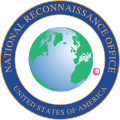This article needs additional citations for verification .(June 2016) |
| Manufacturer | Lockheed Corporation |
|---|---|
| Country of origin | United States |
| Operator | NRO |
| Applications | Reconnaissance Geodetic mapping |
| Specifications | |
| Bus | RM-81 Agena |
| Launch mass | 1,274 kg (2,809 lb) |
| Equipment | Optical cameras 556 x 556 km coverage 140 m resolution |
| Regime | LEO |
| Production | |
| Status | Retired |
| Launched | 12 |
| Retired | 5 |
| Failed | 4 |
| Lost | 3 |
| Related spacecraft | |
| Derived from | CORONA |


KH-5 ARGON was a series of reconnaissance satellites produced by the United States from February 1961 to August 1964. The KH-5 operated similarly to the CORONA series of satellites, as it ejected a canister of photographic film. At least 12 missions were attempted, but at least 7 resulted in failure. The satellite was manufactured by Lockheed. Launches used Thor-Agena launch vehicles flying from Vandenberg Air Force Base, with the payload being integrated into the Agena.
